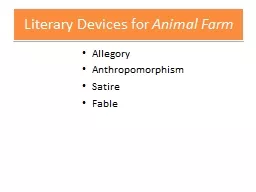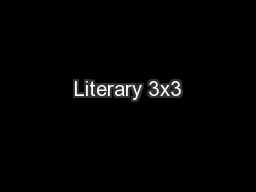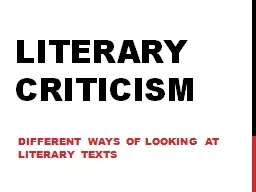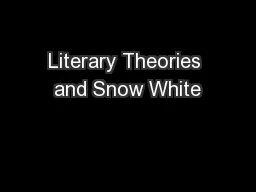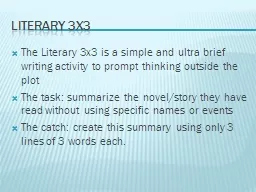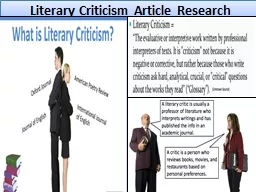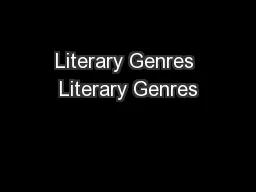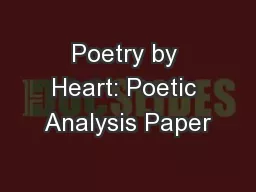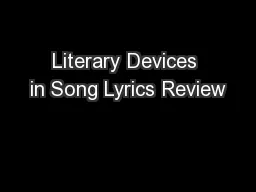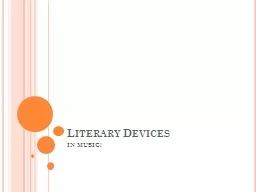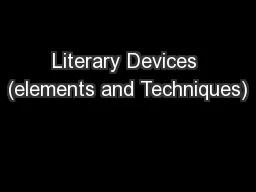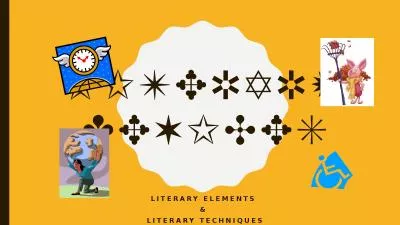PPT-Literary Devices for
Author : tawny-fly | Published Date : 2017-11-28
Animal Farm Allegory Anthropomorphism Satire Fable Allegory A form of extended metaphor in which objects persons and actions in a narrative are equated with meanings
Presentation Embed Code
Download Presentation
Download Presentation The PPT/PDF document "Literary Devices for" is the property of its rightful owner. Permission is granted to download and print the materials on this website for personal, non-commercial use only, and to display it on your personal computer provided you do not modify the materials and that you retain all copyright notices contained in the materials. By downloading content from our website, you accept the terms of this agreement.
Literary Devices for: Transcript
Download Rules Of Document
"Literary Devices for"The content belongs to its owner. You may download and print it for personal use, without modification, and keep all copyright notices. By downloading, you agree to these terms.
Related Documents

